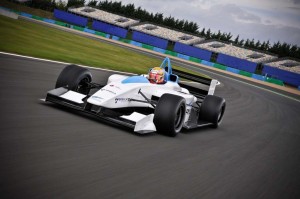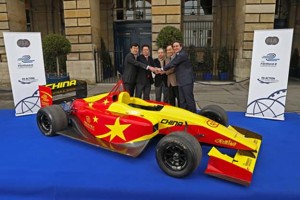Anyone who thinks battery power means a slow, cramped and boring ride needs to think again. This year’s Geneva Motor Show is loaded with examples showing what electric propulsion can do, from the peppy Audi A3 e-Tron plug-in to the fearsome, all-electric Mercedes-Benz SLS AMG Electric Drive.
And if you’re still not convinced, the Fédération Internationale de l´Automobile, the same sanctioning body that governs Formula One, is weighing in. It’s set to sanction first eight battery-car races that will be part of the new Formula E series set to debut in 2014.
While the calendar is still preliminary, it calls for races in London, Rome, Los Angeles, Miami, Beijing, Putrajaya, Buenos Aires and Rio de Janeiro. The goal is to add two more events for next year.
“Zero emission world class motor racing is a scintillating concept and I am hugely keen that London be involved in the birth of Formula E,” says Boris Johnson, the battery-electric proponent who also serves as mayor of London. “It has the potential to highlight the impressive strides being made in the manufacture of electric vehicles and hosting a street race could also be of considerable economic benefit to our city.”
Formula E is by no means the first or only battery-powered racing event. There’ve been quite a few in recent years, and proponents have used motor sports as a venue to try to create interest in the technology for more than a century.
The challenge has been to come up with battery systems that can generate the level of excitement of a NASCAR or Formula One-style racer.
“They’re pretty exciting to watch but they’re not much fun to listen to,” lamented John McElroy, a long-time motorsports fan and host of the Autoline: Detroit television series.
The good news is that electric motors can develop massive amounts of tire-spinning torque, and it comes on immediately after they start to turn, rather than waiting for the revs to build up, as with a conventional gasoline engine.
One of the more significant moves by Formula E promoters was the decision to stage all of the 2014 races in urban centers, rather than out on a track. Only a handful of conventional races – notably including the F1 grand prix in Monaco – take that approach.
“The fact that we will only race in city centers highlights the main message of our Championship: the electric car as a solution for mobility in cities of the future,” explained Alejandro Agag, CEO of Formula E Holdings
There are still some obstacles that could short-circuit the plans for the electric race. For one thing, there are only two teams now firmly locked in place, including Britain’s FIA Formula E Team Drayson and the Formula E Team China Racing.
“We are very excited that the FIA is launching an electric car racing series and we are proud to be one of the first Formula E teams,” said Yu Liu, head of the Chinese team. I believe Formula E is a perfect platform for China Racing and our key partners to get involved in the future of motor sport. Our presence in the Championship will encourage millions of Chinese fans to follow the series.”
Significantly, China has laid out plans that could position it as the world’s largest market for battery-electric vehicles in the coming decade, Nissan CEO Carlos Ghosn this week telling TheDetroitBureau.com he expects China to help kick-start global demand for the technology.
Organizers eventually hope to add as many as eight more teams to the Formula E series and have plans to order 40 cars. Italian design house Dallara will work with Britain’s McLaren – already a major force in F1 – to design and build the vehicles in a consortium with a new French company, Spark Racing Technology.


